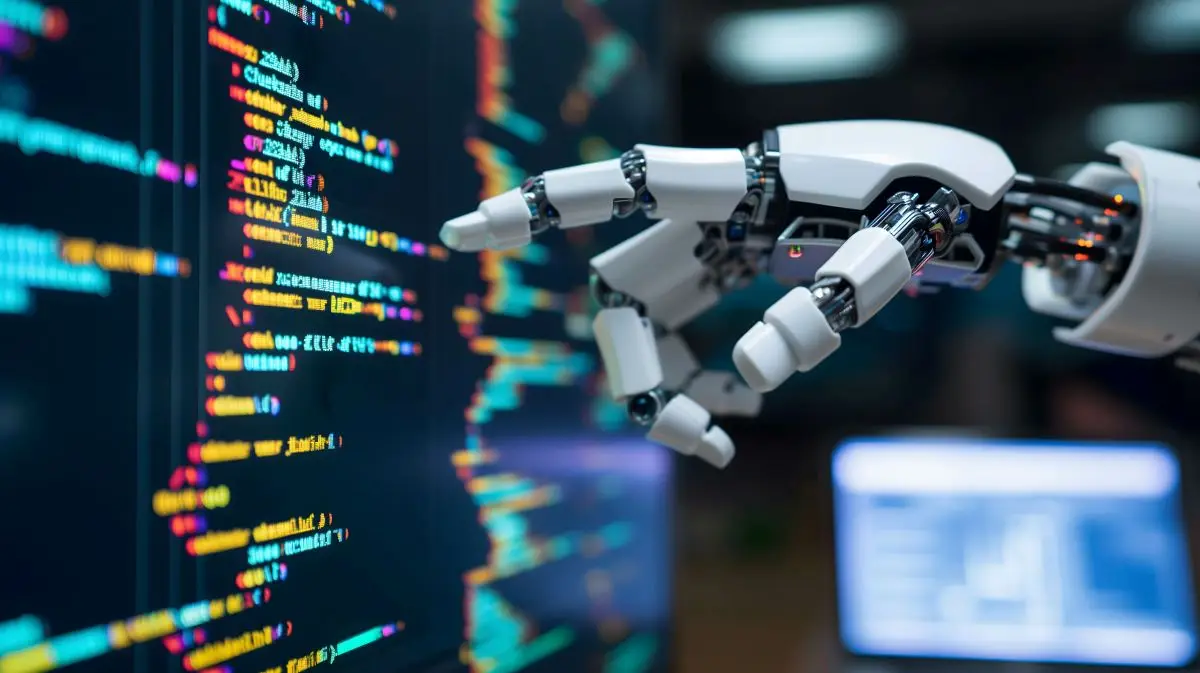The era of AI-driven quality forecasting is revolutionizing the landscape of quality assurance (QA) across various industries. By leveraging advanced algorithms, businesses are now capable of predicting and improving the quality of products and services with unprecedented precision. This article dives deep into how AI is reshaping QA processes, offering insights into its benefits and applications.

Introduction to AI-driven Quality Forecasting
Quality assurance has always been a critical component in the manufacturing and service sectors. However, traditional QA methods often fall short in terms of speed and accuracy. Enter AI-driven quality forecasting, which uses machine learning and data analytics to predict quality outcomes effectively. This not only enhances the accuracy of forecasts but also reduces the time and resources spent on manual quality checks.
The Role of AI in Quality Assurance
Artificial Intelligence (AI) plays a pivotal role in transforming QA. It allows for real-time data analysis and faster response times, ensuring that potential quality issues are identified and rectified before they escalate. This proactive approach is a game-changer for industries aiming to maintain high standards in their products and services.
Machine Learning Algorithms in QA
Machine learning algorithms are at the heart of AI-driven quality forecasting. These algorithms learn from historical data to identify patterns and predict future outcomes. By doing so, they provide valuable insights into potential quality issues, enabling businesses to take corrective actions in advance. For more on how behavioral testing leverages machine learning, visit our behavioral testing page.
Data-Driven Decision Making
Data is a critical asset in any business. With AI, companies can harness large volumes of data to make informed decisions. AI-driven quality forecasting utilizes data analytics to provide actionable insights, helping businesses prioritize their efforts and resources effectively.
Benefits of AI-driven Quality Forecasting
The integration of AI in quality forecasting offers numerous benefits. It enhances accuracy, reduces costs, and improves efficiency. Additionally, it provides a competitive edge by ensuring that products meet quality standards consistently.
Enhanced Accuracy
AI models are capable of analyzing vast amounts of data with high precision, leading to more accurate forecasts. This reduces the margin for error significantly compared to traditional methods.
Cost Reduction
By predicting quality issues early, businesses can avoid costly recalls and rework. This not only saves money but also preserves the company’s reputation in the market.
Increased Efficiency
AI streamlines the QA process by automating routine tasks, allowing human resources to focus on more strategic activities. This boosts overall productivity and allows for faster time-to-market.
Applications of AI in Quality Forecasting
The applications of AI in quality forecasting are vast and varied. From manufacturing to healthcare, AI is making significant strides in ensuring quality across different sectors.
Manufacturing Sector
In manufacturing, AI is used to monitor production processes in real-time, ensuring that products meet predefined quality standards. By analyzing data from various sensors and machines, AI can predict potential defects and suggest corrective actions.
Healthcare Industry
In healthcare, AI-driven quality forecasting helps in predicting patient outcomes and improving the quality of care. By analyzing patient data, AI models can identify trends and suggest personalized treatment plans.
Software Testing
AI is also transforming software testing by providing insights into code quality and potential bugs. For more insights on AI’s role in software testing, visit our static code analysis page.
Challenges in Implementing AI-driven Quality Forecasting
Despite its numerous benefits, implementing AI in quality forecasting is not without challenges. Businesses must address issues such as data quality, integration with existing systems, and the need for skilled personnel.
Data Quality
AI models rely heavily on data. Therefore, the quality of data is paramount. Inaccurate or incomplete data can lead to incorrect forecasts, which can be detrimental to business operations.
System Integration
Integrating AI technologies with existing systems can be complex and requires careful planning. Businesses must ensure that AI solutions are compatible with their current infrastructure.
Skilled Personnel
The implementation of AI requires skilled personnel who can develop and maintain AI models. Businesses must invest in training and development to build a competent workforce.
Future of AI-driven Quality Forecasting
The future of AI-driven quality forecasting looks promising. As AI technologies continue to evolve, we can expect even more accurate and efficient quality assurance processes. This will lead to better products, happier customers, and more successful businesses.
Emerging Technologies
Emerging technologies such as deep learning and neural networks are set to enhance the capabilities of AI in quality forecasting. These technologies will provide even deeper insights into quality management.
Increased Adoption
As businesses recognize the benefits of AI, we can expect increased adoption across various sectors. This will lead to more data-driven decision-making and improved quality standards.
Continuous Improvement
AI-driven quality forecasting is not a one-time solution. It requires continuous improvement and adaptation to changing market dynamics. Businesses must remain agile and open to new advancements in AI technology.
Conclusion
In conclusion, AI-driven quality forecasting is a powerful tool that can transform quality assurance processes. By leveraging AI, businesses can predict and improve product quality, reduce costs, and increase efficiency. As AI technology continues to evolve, its impact on quality assurance will only grow stronger.

FAQs
What is AI-driven quality forecasting?
AI-driven quality forecasting uses artificial intelligence and machine learning to predict quality outcomes. It analyzes historical data to identify patterns and provide insights into potential quality issues.
How does AI improve quality assurance?
AI improves quality assurance by providing real-time data analysis and faster response times. It helps identify potential quality issues early, allowing businesses to take corrective actions before they escalate.
What are the benefits of AI in quality forecasting?
The benefits of AI in quality forecasting include enhanced accuracy, cost reduction, and increased efficiency. AI models can analyze large volumes of data with high precision, leading to more accurate forecasts.
This article contains affiliate links. We may earn a commission at no extra cost to you.

